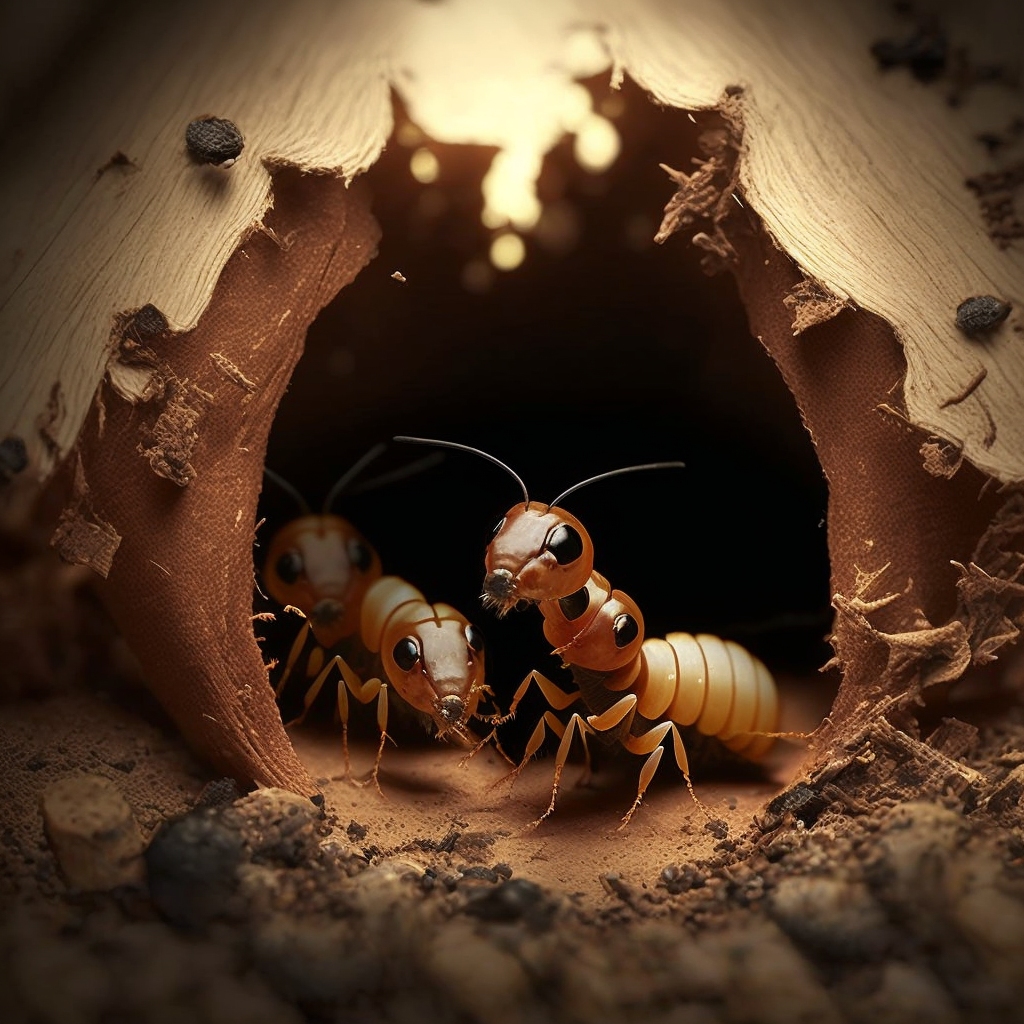Do Termites Eat Cedar?

Contrary to popular belief, termites are not allergic to cedar and will consume it if necessary.
Despite this, cedar is less appealing to termites than other kinds of wood.
This is so because cedar includes allelochemicals, substances made naturally by plants that serve as insect repellents.
The heartwood, or core, of trees is where allelochemicals are often found.
Typically, this wood is denser and darker. Unfortunately, while the cedar’s core may somewhat ward off termites, it does not completely do so, and the white wood that surrounds the core is not at all termite-resistant.
This added level of toughness and endurance may appeal to certain homeowners when choosing a building material, such as cedar.
It costs more than other varieties of wood, though.
Do termites eat pressure-treated wood?
Chemical preservatives are added to pressure-treated wood to help guard it against decay and insects.
This wood is frequently used for decks, outside basement walls, fence posts, and many other outdoor structures that are in direct contact with the ground.
While pressure-treated wood is a sort of termite-resistant wood, it is crucial to remember that it is not flawless.
Pressure-treated wood can be destroyed by termites. This often occurs if the wood becomes wet and begins to rot.
What are the Types of Termites and what Kind of Wood They Like ?
Although termites aren’t inherently picky eaters, you might be surprised to hear that various species do have certain preferences regarding the kinds of wood they will consume.
The main dangers to homes and property in the United States are subterranean and drywood termites.
It’s critical to comprehend the kinds of wood that these species are drawn to and how your home can be a target because each of these species has a variety of ways in which they can attack a structure.
- Subterranean termites prefer to consume the springwood’s delicate fibers while avoiding the tougher summerwood.
- Drywood termites are attracted to dry wood, such as the timbers and framing in your home as well as the hardwood flooring and furnishings. They can obtain the water they require directly from the wood they live in without coming into contact with the soil.
- Dampwood termites are frequently found consuming rotting or dead tree stumps and logs. Rarely do they invade structures, because they like moist wood.
What Type of Wood Do Termites Eat?

Cellulose is the organic material that gives wood and other types of plants their strength, and it is this part of the wood that termites consume.
Termites literally eat away at the strength of the building, weakening it over time, which is why their feeding activity within homes and other structures causes such problems.
For this reason, homeowners who want to avoid termite infestations keep dead trees and limbs moved away from their property.
Some varieties of termites like moist or rotting wood. So to reduce the chance that termites will travel from the rotting wood to your home, relocate any woodpiles or fallen logs far away from the house, garage, fence, and any other wooden structures.

New pressure-treated wood is often unaffected by termites. This wood can grow more prone to attack as it ages.
Because they are composed primarily of plastic components and contain less natural material than wood, wood building materials are also unappealing to these pests.
In order to construct structures that are more resistant to termite infestations, pressure-treated and composite wood materials may be wise choices.
Additionally, the heartwood, or interior wood of trees, naturally resists termites. This is the non-living, hard, and dense portion of the wood.
Termites are less likely to damage flooring or furniture constructed of any kind of heartwood.
Even though termites tend to stay away from some types of wood, such as teak, redwood, and yellow cedar, they can still eat these woods if they are the only source of food.
Building using these types of hardwoods will therefore increase the natural resistance to termite infestations, but they still can’t offer full or long-term defenses against these invading pests.
Why do Termites Like to Eat Wood ?

The cellulose found in plant cell walls, which gives them their stiffness, is what termites use to consume wood.
Other things we frequently use in our daily life such as cotton, rayon garments, linen, and other paper goods, also include cellulose.
A termite’s gut is home to microorganisms with enzymes that can convert cellulose into the nutrients they need to survive.
Other creatures besides termites, like sheep, cows, and horses, can also do this.
Any form of wood that can supply cellulose to a termite is acceptable for consumption.
Conclusion
Termites are harmed by chemicals in cedar! However, they could attempt to eat cedar if they are unable to locate any other nearby sources of cellulose and nutrients.



